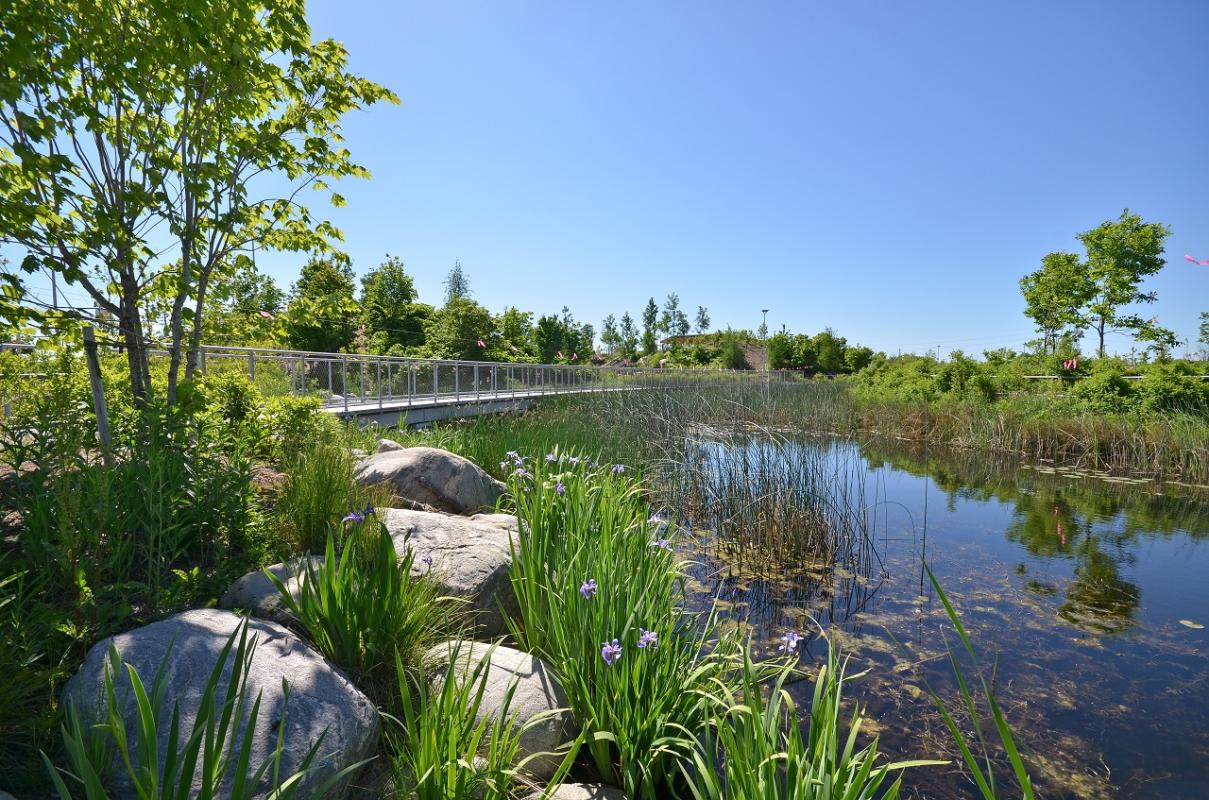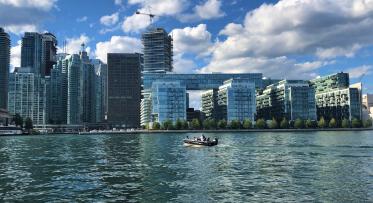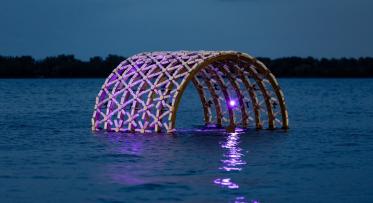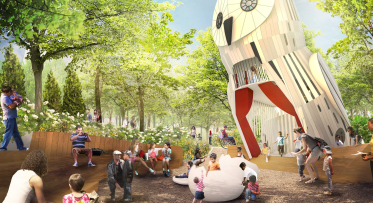Waterfront Toronto’s Corporate Social Responsibility and Sustainability Report Demonstrates Progress in Advancing Environmental, Social and Economic Goals
Toronto, December 7, 2015 - Today, Waterfront Toronto released its latest Corporate Social Responsibility and Sustainability Report. This update to the initial 2012 report quantifies the progress Waterfront Toronto has made in meeting broad environmental, social and economic goals. The report demonstrates how building durable and beautiful spaces contributes to Toronto’s economic competitiveness and the quality of life for its residents.
Accomplishments detailed in the report include:
- Four LEED® Gold buildings completed and several more under design and construction or under review by the Canada Green Building Council;
- Over 3,600 trees planted;
- Approximately 109,000 square metres of aquatic habitat created;
- An average 90 per cent waste diversion rate for construction and demolition debris;
- 25 new or improved parks and public spaces;
- 496 affordable housing units built and another 80 units under construction;
- Seven public art installations completed;
- Attracting private sector investment, including 1,405 residential market units built and another 1,500 units under construction, and approximately 1 million square feet of commercial space;
- More than 28 kilometres of critical infrastructure constructed, including new watermains, sanitary and stormwater sewers; and
- Generating $3.2 billion in economic output for the Canadian economy, $622 million in government revenues and 16,200 full-time person years of employment.
“This is an exciting time to share a milestone update of our Corporate Social Responsibility and Sustainability Report,” said John Campbell, Waterfront Toronto’s President and CEO. “Since 2003, I've had the pleasure of leading a dynamic and accomplished team of professionals dedicated to making Toronto's waterfront best-in-class. Throughout this time, and since our last report, many of our projects have moved from planning and implementation to completion. It is immensely rewarding to see how our Corporate Social Responsibility and Sustainability principles are providing benefits for our new waterfront communities and the rest of the city.”
With many new projects in the planning phase and underway, Waterfront Toronto remains focused on low-carbon objectives while delivering a revitalized waterfront and supporting climate change adaptation and resiliency. We are currently conducting due diligence on plans to naturalize the mouth of the Don River and flood-protect the Port Lands and other nearby areas . Building on the flood protection achieved in the West Don Lands, this project contributes to resiliency – providing regulatory flood protection for 240 hectares (593 acres), unlocking the development potential of the Port Lands and re-creating vital wet lands and aquatic habitat. The flood protection proposal addresses the fundamental challenge of transforming the underused Port Lands into a long-term asset that will support Toronto's growth and economic competitiveness. Once flood protection is complete, the plan is to transform the area into resilient and sustainable mixed-use communities. This project is featured in the most recent Cities100 publication, an annual guide completed in collaboration with the C40 that recognizes 100 world-leading policy solutions on climate change. A short video examining the challenges and opportunities in the Port Lands can be found here.
In the execution of its vision, Waterfront Toronto takes a triple bottom line approach to quantifying its accomplishments. This means expanding the set of standards for measuring success beyond economic accomplishments to include social and environmental performance.
Waterfront Toronto has successfully delivered a large portion of its initial mandate, including partnering with leading developers in the West Don Lands and East Bayfront to create well-designed, complete neighbourhoods. Toronto now has new, well-loved public parks such as Corktown Common, Sugar Beach and Sherbourne Common. It has improved public spaces such as the revitalized Queens Quay, designed to attract residents and visitors alike to the waterfront’s main boulevard. In addition, public art installations have elevated the experience on our streets for residents and visitors.
The Corporate Social Responsibility and Sustainability Report provides information on waterfront revitalization by examining the vision for sustainability and reviewing the corporation’s performance. This report covers the period from 2001 to spring 2015, and has been prepared using the Global Reporting Initiative (GRI) framework, an internationally-accepted independent standard for reporting on sustainability performance. The report is based on GRI's G4 Guidelines as well as the Construction and Real Estate Sector Disclosure, which covers key sector-specific issues. It supports Waterfront Toronto’s commitment to transparency and demonstrates its progress and achievements, as well as areas where improvements may be made or lessons may be carried forward.
In 2001, Waterfront Toronto was given a 20-year mandate and $1.5 billion of seed capital to begin the transformation of 800 hectares (2,000 acres) of underutilized brownfield lands into sustainable mixed-use communities. In addition to revitalizing the waterfront, Waterfront Toronto’s objective is to make Toronto a more economically competitive and prosperous city in the long-term. In an era where talent and capital choose where to locate, quality of life is a key factor in decision making. By leveraging an infrastructure project to deliver key economic, social and environmental benefits, Waterfront Toronto is helping position Toronto to compete aggressively with other top-tier global cities for investment, jobs and people.
Media Contact
Carol Webb
Manager, Project Communications
E-mail: media@waterfrontoronto.ca




